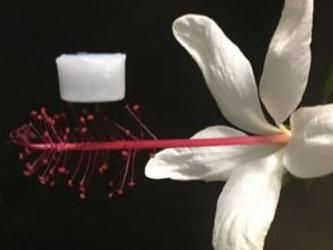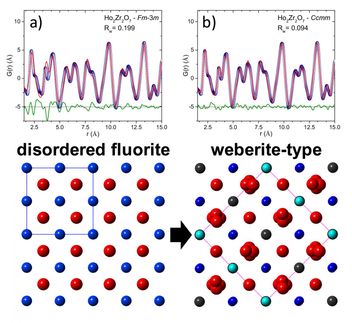New technique prints metal oxide thin film circuits at room temperature
Researchers have demonstrated a technique for printing thin metal oxide films at room temperature, and have used the technique to create transparent, flexible circuits that are both robust and able to function at high temperatures.

Researchers have developed a technique for printing thin metal oxide films at room temperature, and demonstrated the technique by printing metal oxides onto a polymer, creating highly flexible circuits.
Minsik Kong
“Creating metal oxides that are useful for electronics has traditionally required making use of specialized equipment that is slow, expensive, and operates at high temperatures,” says Michael Dickey, co-corresponding author of a paper on the work and the Camille and Henry Dreyfus Professor of Chemical and Biomolecular Engineering at North Carolina State University. “We wanted to develop a technique to create and deposit metal oxide thin films at room temperature, essentially printing metal oxide circuits.”
Metal oxides are an important material found in nearly every electronic device. Most metal oxides are electrically insulating (like glass). But some metal oxides are both conductive and transparent, and those oxides are critically important for the touch screen on your smart phone or the monitor on your computer.
“In principle, metal oxide films should be easy to make,” Dickey says. “After all, they form naturally on the surface of nearly every metal object in our homes – soda cans, stainless steel pots, and forks. Although these oxides are everywhere, they are of limited use since they can’t be removed from the metals they form on.”
For this work, the researchers developed a novel way to separate metal oxide from a meniscus of liquid metal. If you fill a tube with liquid, a meniscus is the curved surface of the liquid that extends beyond the end of the tube. It’s curved because of the surface tension that prevents the liquid from spilling out completely. In the case of liquid metals, the surface of the meniscus is covered with a thin metal oxide skin that forms where the liquid metal meets the air.
“We fill the space between two glass slides with liquid metal so that a small meniscus extends beyond the ends of the slides,” Dickey says. “Think of the slides as the printer, and the liquid metal is the ink. The meniscus of liquid metal can then be brought into contact with a surface. The meniscus is covered with oxide on all sides, analogous to the thin rubber that encases a water balloon. When we move the meniscus across the surface, the metal oxide on the front and back of the meniscus sticks to the surface and peels off, like the trail left behind by a snail. As this happens, the exposed liquid on the meniscus constantly forms fresh oxide to enable continuous printing.”
The result is that the printer lays down a two-layer thin film of metal oxide that is approximately 4 nm thick.
“It’s important to note that even though we use a liquid, the metal oxide film deposited on the substrate is solid and incredibly thin,” Dickey says. “The film adheres to the substrate – it’s not something you could smudge or smear. That’s important for printing circuits.”
The researchers demonstrated this technique with several liquid metals and metal alloys, with each metal altering the composition of the metal oxide film. The researchers were also able to lay down a stack of layered thin films by making multiple passes with the printer.
“One of the things we found surprising was that the printed films are transparent but have metallic properties,” Dickey says. “They are highly conductive.”
“Because the films have a metallic character, gold bonds to the printed oxide, which is unusual – gold normally doesn’t stick to oxides,” says Unyong Jeong, co-corresponding author of a paper on the work and a professor of materials science and engineering at Pohang University of Science and Technology (POSTECH). “When you introduce a small amount of gold to these thin films, the gold is essentially incorporated into the film. This helps prevent the conductive properties of the oxide from degrading over time.”
“We think these films are so conductive because the center of the two-layer thin film contains very little oxygen, it’s more metallic and less of an oxide,” Jeong says. “Without the presence of gold, more oxygen makes its way to the center of the layered thin film over time, which causes the film to become electrically insulating. Adding gold to the thin film helps prevent the central part of the film from oxidizing. The fact that this works so well is surprising because we’re using so little gold – the oxide thin film is still highly transparent.”
In addition, the researchers found that the thin films retained their conductive properties at high temperatures. If the thin film is 4 nanometers thick, it retains its conductive properties up to almost 600 degrees Celsius. If the thin film is 12 nanometers thick, it retains its conductive properties up to at least 800 degrees Celsius.
The researchers also demonstrated the utility of their technique by printing metal oxides onto a polymer, creating highly flexible circuits that were robust enough to retain their integrity even after being folded 40,000 times.
“The films can also be transferred to other surfaces, such as leaves, to create electronics in unconventional places,” Dickey says. “We’re preserving the intellectual property on this technique and are open to working with industry partners to explore potential applications.”





























































